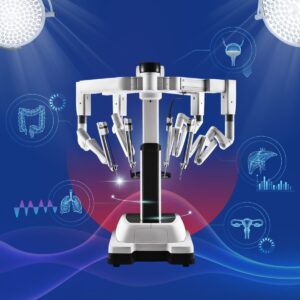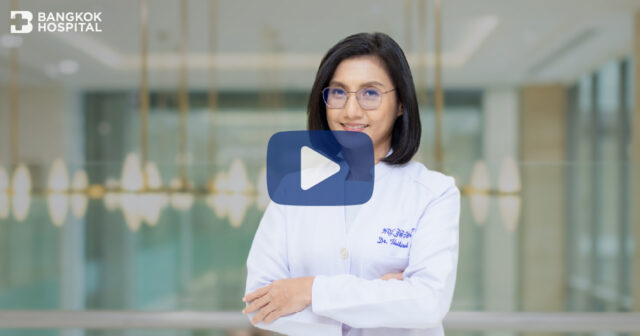Nowadays, most sinus surgery can be done by endoscopic surgery. Endoscopic surgical technique has been available for 30 years. This technique can be used for the treatment of nasolacrimal duct obstruction, exophthalmos, optic nerve compression, cerebrospinal fluid rhinorrhea, pituitary adenoma, and tumor of nose and paranasal sinus.
When is sinus surgery necessary?
1) Conditions that need to be treated by surgery.
- Sinusitis – if the infection spreads to the eye/brain
- Tumor
- Sinus disease caused by a fungal infection
- Sinus obstruction
2) Conditions that might require surgery
- Chronic sinusitis, recurrent acute sinusitis, or nasal polyps that do not response to medical treatment (1-3 months medical treatment)
What will happen during sinus surgery?
The operation can be performed under general anesthesia. The doctor uses an endoscope (a small, flexible tube with a light and a camera lens at the end) to view the inside of the nose. Small incisions or cuts are made to allow the scope to pass. The doctor may create new passages or open existing ones by removing polyps, cysts, or thickened mucous membranes. This surgical method is less invasive comparing to the open surgery. This results in less bleeding, less pain, and better surgical outcome.
Types of surgery
There are a few different options as below.
- Balloon sinuplasty
- Minimally invasive sinus technique
- Functional endoscopic sinus surgery (FESS)
- Full-house FESS
How am I evaluated for sinus surgery?
The decision to have sinus surgery and surgical method will be based on your condition and the information below.
- Sinuses are useful organs and there are structures that prevent sinuses to connect directly to the nose.
- Surgery helps the sinuses drain, preventing infections. The doctor usually makes the sinus openings bigger by removing infected or damaged tissue, bone (to make a wider opening to let mucus drain from the sinuses), polyps inside the nose. After the surgery, nasal wash is more effective and the mucus also drains easily.
However, if the sinus opening is bigger, bacteria/virus can also get into the sinus easier. For full-house FESS technique, after the surgery, 5 sinuses will be connected to the nose.
Only some patients need surgery to treat sinus condition. It is best that you consult a specialist and discuss your treatment option. Before resorting to sinus surgery, you should try maximum medical therapy. If surgery is indicated, a surgical technique is selected based on individual patient’s condition and needs.
Your doctor will decide which surgical technique is appropriate for your condition. In general, the goal of sinus surgery is to flush out infected tissue, open up blocked passages, and keep enough healthy tissue so that your nose and sinuses can function normally.
What are the risks of sinus surgery?
As sinuses are close to eyes, brain, optic nerve, and blood vessels, there are complications that only occur in a relatively small number of cases (1% damage to the eye and cerebrospinal fluid rhinorrhea, 0.1% damage to optic nerve and blood vessel). Currently, there is a surgical navigation system in order to improve the surgical outcome and reduce complications.
Will sinus surgery cure my sinus condition?
As with all sinus surgery, it is possible that the disease may not be cured by the surgery, or that disease may recur at a later time. It should be realized that some medical therapy is usually continued after surgery. This is necessary to prevent recurrence of disease. Overall, the majority of patients have had significant improvement with the combination of surgery and continued medical management.













